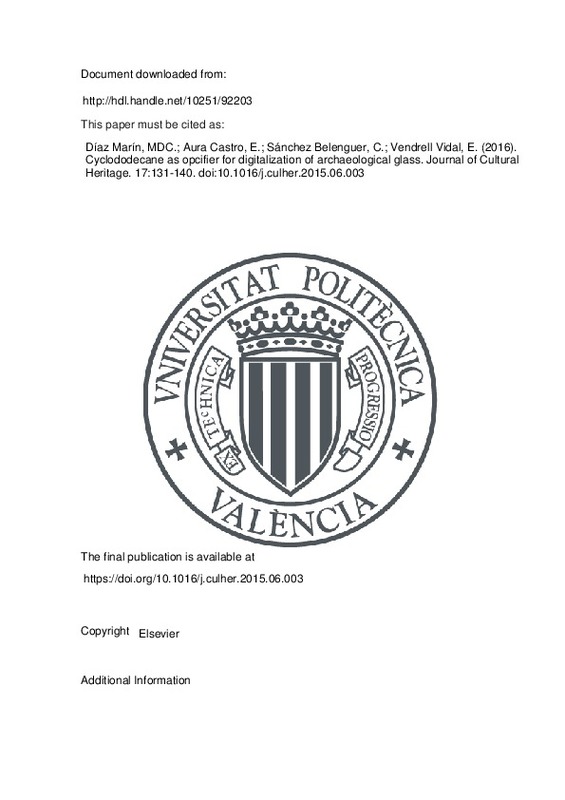JavaScript is disabled for your browser. Some features of this site may not work without it.
Buscar en RiuNet
Listar
Mi cuenta
Estadísticas
Ayuda RiuNet
Admin. UPV
Cyclododecane as opcifier for digitalization of archaeological glass
Mostrar el registro completo del ítem
Díaz Marín, MDC.; Aura Castro, E.; Sánchez Belenguer, C.; Vendrell Vidal, E. (2016). Cyclododecane as opcifier for digitalization of archaeological glass. Journal of Cultural Heritage. 17:131-140. https://doi.org/10.1016/j.culher.2015.06.003
Por favor, use este identificador para citar o enlazar este ítem: http://hdl.handle.net/10251/92203
Ficheros en el ítem
Metadatos del ítem
| Título: | Cyclododecane as opcifier for digitalization of archaeological glass | |
| Autor: | Díaz Marín, María del Carmen Sánchez Belenguer, Carlos | |
| Entidad UPV: |
|
|
| Fecha difusión: |
|
|
| Resumen: |
[EN] This paper faces the problem of acquiring archaeological artifacts using triangulation based 3D laser
scanners and focusing on reflective/refractive surfaces. This kind of artifacts are mostly made of glass
or ...[+]
|
|
| Palabras clave: |
|
|
| Derechos de uso: | Reserva de todos los derechos | |
| Fuente: |
|
|
| DOI: |
|
|
| Editorial: |
|
|
| Versión del editor: | https://doi.org/10.1016/j.culher.2015.06.003 | |
| Código del Proyecto: |
|
|
| Agradecimientos: |
This work is supported by the "Programa de Ayudas de Investigacion y Desarrollo (PAID)" of the Universitat Politecnica de Valencia and the "Plan Nacional de I+D+i 2008-2011" from the Ministerio de Economia y Competitividad ...[+]
|
|
| Tipo: |
|







![[Cerrado]](/themes/UPV/images/candado.png)


